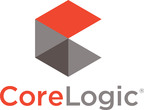
CoreLogic Introduces Housing Credit Index To Track Mortgage Credit Risk Trends
PR Newswire
IRVINE, Calif., Dec. 20, 2016
IRVINE, Calif., Dec. 20, 2016 /PRNewswire/ -- CoreLogic® (NYSE: CLGX), a leading global property information, analytics and data-enabled solutions provider, today released a new quarterly report featuring the CoreLogic Housing Credit Index (HCI™) that measures variations in home mortgage credit risk attributes over time—including borrower credit score, debt-to-income ratio (DTI) and loan-to-value ratio (LTV). A rising HCI indicates that new single-family loans have more credit risk than during the prior period, and a declining HCI means that new originations have less credit risk.
Experience the interactive Multimedia News Release here: http://www.multivu.com/players/English/71280582-corelogic-housing-credit-index-mortgage-risk-report
The current HCI shows mortgage loans originated in Q3 2016 continued to exhibit low credit risk versus the previous quarter and Q3 2015. In terms of credit risk, Q3 2016 loans are among the highest-quality home loans originated since the year 2001.
"Mortgage originations over the past 15 years have exhibited a huge swing in credit tolerance, as shown in our Housing Credit Index. The index incorporates six risk attributes, including the three C's of underwriting—credit, collateral, and capacity. Using 2001 originations as a base year, the HCI shows the significant loosening of credit running up to 2006. This was followed by a dramatic tightening of credit in response to the real estate crash and a decline in high-credit-risk applicants t beginning with the Great Recession," said Dr. Frank Nothaft, chief economist of CoreLogic. "While low downpayment and high payment-to-income products are available today, borrowers generally need good credit scores to qualify. This may be a factor that has led to the drop-off in applications from those with lower credit scores during the last few years."
Nothaft also observed that one of the consequences of this prolonged trend is that many potential homebuyers appear to believe that they cannot get a mortgage. "When we compare applications to closed loans, what we find is that lenders are originating the bulk of the applications that they are receiving, but the applications that are coming in tend to be from relatively high quality, low-risk applicants."
HCI Highlights as of Q3 2016 (Figures 2-3):
- Credit Score: The average credit score for homebuyers increased 5 points year over year between Q3 2015 and Q3 2016, rising from 734 to 739. In Q3 2016, the share of homebuyers with credit scores under 640 had dropped by more than three-quarters compared with 2001.
- Debt-to-Income: The average DTI for homebuyers fell slightly between Q3 2015 and Q3 2016, falling from 35.7 percent to 35.4 percent. In Q3 2016, the share of homebuyers with DTIs greater than or equal to 43 percent was about the same compared with 2001.
- Loan-to-Value: The LTV for homebuyers decreased about 1 percentage point between Q3 2015 and Q3 2016, declining from 86.8 percent to 85.6 percent. In Q3 2016, the share of homebuyers with an LTV greater than or equal to 95 percent had increased by more than one-fourth compared with 2001.
Figure 2: Credit Score of Purchase-Money Borrowers: Average and by Percentile
Figure 3: Averages of Credit Risk Attributes of Purchase-Money
Figures 1 through 3 include originations through September 2016 (Q3 2016).
For ongoing housing trends and data, visit the CoreLogic Insights Blog: http://www.corelogic.com/blog.
Methodology
The CoreLogic Housing Credit Index (HCI) measures the variation in mortgage credit risk attributes and uses loan attributes from mortgage loan servicing data that are combined in a principal component analysis (PCA) model. PCA can be used to reduce a complex data set (e.g., mortgage loan characteristics) to a lower dimension to reveal properties that underlie the data set.
The HCI combines six mortgage credit risk attributes, including borrower credit score, loan-to-value (LTV) ratio, debt-to-income (DTI) ratio, documentation level (full documentation of a borrower's economic conditions or incomplete levels of documentation, including no documentation), occupancy (owner-occupied primary residence, second home, or non-owner-occupied investment), and property type (whether property is a condominium or co-op). It spans more than 15 years, covers all loan products in both the prime and subprime lending segments and includes all 50 states and the District of Columbia, permitting peak-to-peak and trough-to-trough business cycle comparisons across the U.S. The CoreLogic prime and subprime servicing data include loan-level information, both current and historical, from servicers on active first-lien mortgages in the U.S. In addition, Inside Mortgage Finance (IMF) survey data and CoreLogic public records data for the origination share by loan type (conventional, government, jumbo, subprime) were used to adjust the servicing data to assure that it reflects primary market shares. These changes across different dimensions are reflected in the HCI. A rising HCI indicates increasing credit risk and a declining HCI indicates decreasing credit risk.
Source: CoreLogic
The data provided are for use only by the primary recipient or the primary recipient's publication or broadcast. These data may not be re-sold, republished or licensed to any other source, including publications and sources owned by the primary recipient's parent company without prior written permission from CoreLogic. Any CoreLogic data used for publication or broadcast, in whole or in part, must be sourced as coming from CoreLogic, a data and analytics company. For use with broadcast or web content, the citation must directly accompany first reference of the data. If the data are illustrated with maps, charts, graphs or other visual elements, the CoreLogic logo must be included on screen or web site. For questions, analysis or interpretation of the data contact Lori Guyton at lguyton@cvic.com or Bill Campbell at bill@campbelllewis.com. Data provided may not be modified without the prior written permission of CoreLogic. Do not use the data in any unlawful manner. These data are compiled from public records, contributory databases and proprietary analytics, and its accuracy depends upon these sources.
About CoreLogic
CoreLogic (NYSE: CLGX) is a leading global property information, analytics and data-enabled solutions provider. The company's combined data from public, contributory and proprietary sources includes over 4.5 billion records spanning more than 50 years, providing detailed coverage of property, mortgages and other encumbrances, consumer credit, tenancy, location, hazard risk and related performance information. The markets CoreLogic serves include real estate and mortgage finance, insurance, capital markets, and the public sector. CoreLogic delivers value to clients through unique data, analytics, workflow technology, advisory and managed services. Clients rely on CoreLogic to help identify and manage growth opportunities, improve performance and mitigate risk. Headquartered in Irvine, Calif., CoreLogic operates in North America, Western Europe and Asia Pacific. For more information, please visit www.corelogic.com.
CORELOGIC and the CoreLogic logo are trademarks of CoreLogic, Inc. and/or its subsidiaries.

To view the original version on PR Newswire, visit:http://www.prnewswire.com/news-releases/corelogic-introduces-housing-credit-index-to-track-mortgage-credit-risk-trends-300381674.html
SOURCE CoreLogic

Mehr Nachrichten zur CoreLogic, Inc Aktie kostenlos abonnieren
(Mit der Bestellung akzeptierst du die Datenschutzhinweise)

Hinweis: ARIVA.DE veröffentlicht in dieser Rubrik Analysen, Kolumnen und Nachrichten aus verschiedenen Quellen. Die ARIVA.DE AG ist nicht verantwortlich für Inhalte, die erkennbar von Dritten in den „News“-Bereich dieser Webseite eingestellt worden sind, und macht sich diese nicht zu Eigen. Diese Inhalte sind insbesondere durch eine entsprechende „von“-Kennzeichnung unterhalb der Artikelüberschrift und/oder durch den Link „Um den vollständigen Artikel zu lesen, klicken Sie bitte hier.“ erkennbar; verantwortlich für diese Inhalte ist allein der genannte Dritte.




